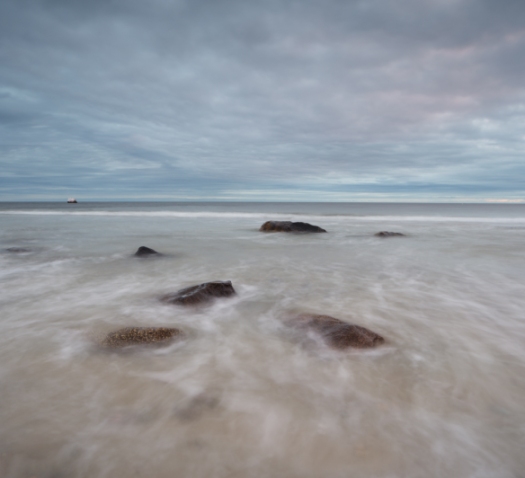I thought that I’d share my first in the field experiment with a tilt shift lens. My first attempt with a tilt shift was this which of course taught me that in addition to manual focusing I needed to also be manual exposure. Probably not too much of a surprise for anyone whose used these lenses but it’s all new to me. I also was ready for the back end freak out where photoshop isn’t able to stitch my images together for me but that comes later.
So how did I get here? I’ve been worrying unnecessarily about depth of field. While you, like me, are setting the F stop to 22 (or some other high number) focusing a third into the scene and then firing away with the knowledge that you’re going to have good front to back focus. While this has served me well I realize that the only thing in your image that actual is in focus in the thing that you’ve focused upon and everything else in the same plane as that point of focus. Everything else is acceptably out of focus.
The medium and large focus photographers that have access to tilt and shift are able to angle the plane of focus and by doing so get more (all?) of the image in focus. Scheimpflug principle anyone? With a DSLR one way to achieve the same large depth of field is by taking multiple images with different points of focus and then blend them to extend the depth of field. Helicon focus is a well respected piece of software that can help if this is something that you’re interested in, beyond what you can achieve in photoshop. This approach is somewhat problematic when things in your image are in motion, such as my favorite subject – water. This is where a tilt shift lens comes in. It should give you access to the same tilt and shift functions that you would have with a medium or large format camera.
My playing so far has been restricted to the shift function which is how the image above was made. A vertical panorama stitched together and then cropped. See the images that I used below.
Top:
Middle:
Bottom
Which when stitched together give:
Which I then cropped to this:
I think that this is working. The next experiment will be to see what I can do with the tilt functionality. That should be fun.






I’m sorta envious here .. tilt and shift! THE DREAM!
I’m wondering if the principle of hyperfocus work here? you might not need to put it all the way to f/22 after all!
However, as far as i know, the tilt and shift lenses were solutions for “vertical” lines rather than horizontal lines – i.e. to ensure the verticals are parallel when taking photos (specifically in architecture) by stitching two photos or more.
if you ask me, i would love to try such a lens for its “natural” miniature effect. As for stitching, I always work on stitching since I do panoramas mainly. I wouldn’t be using such a lens to stitch my photos! (and by the way, PS is bad in stitching).
Not sure if borrow lenses (www.borrowlenses.com) delivers to your part of the world but a fun way to try out lenses that you think you might want to buy.
I haven’t had time to play with the miniature effect although I’ve seen it used in lots of places. I’m interested in the opportunity to use the lens to provide selective focus.
You’re right about the hyperfocal distance – a good and reliable way to get the maximum acceptably in focus. I need to look at this more but I’m trying to get a front to back sharp image at an optimal f-number for the lens I’m using. I’m not sure that you can get that in a single image at, say, f8 by focusing at the hyperfocal distance.
I like the image a lot.
The general rule of focusing 1/3rd of the way into an image is often a long way from the truth. With a full frame DSLR like my Canon 5dMk3 and 17-40mm lens at 17mm the hyperfocal distance at f16 (stay away from f22 if you can IQ degrades) is 2.9 ft and everything is sharp from 16″. At 24mm HFD is 4 ft and dof extends from 34″ to infinity. A crop sensor gives even greater dof than this.
Hi Bill – Many thanks for the comment on the image and also for the useful information about hyperfocal distance. I forgot of course to mention that the whole reason for pursuing tilt lenses is so that I can be at a lower f number, one that is less likely to cause diffraction or otherwise degrade image quality.
This link (http://www.cambridgeincolour.com/tutorials/tilt-shift-lenses2.htm) is a useful source for the application of tilt shift lenses to extend DoF.
Thanks again for the feedback.
Andy
Gosh I love your blog. Now I got a whole new topic I have to research and figure out! Thanks! 🙂
Glad to be of service!
OK, so now you owe me big time ’cause I’m in trouble. I looked at Helicon Focus and am trying to figure out some way that I can convince the smarter half that I really, really, really do need just one more piece of software. Really, just one more, that’s all. For ever and ever and ever. 🙂
The Helicon suite looks amazing! I am going to wait until the cold forces me indoors and then I’ll start playing with it. Thanks again for the tip!
Perhaps Father Christmas will bring it for you?
One can only hope…
Oh wow, i have so much to learn……….good job